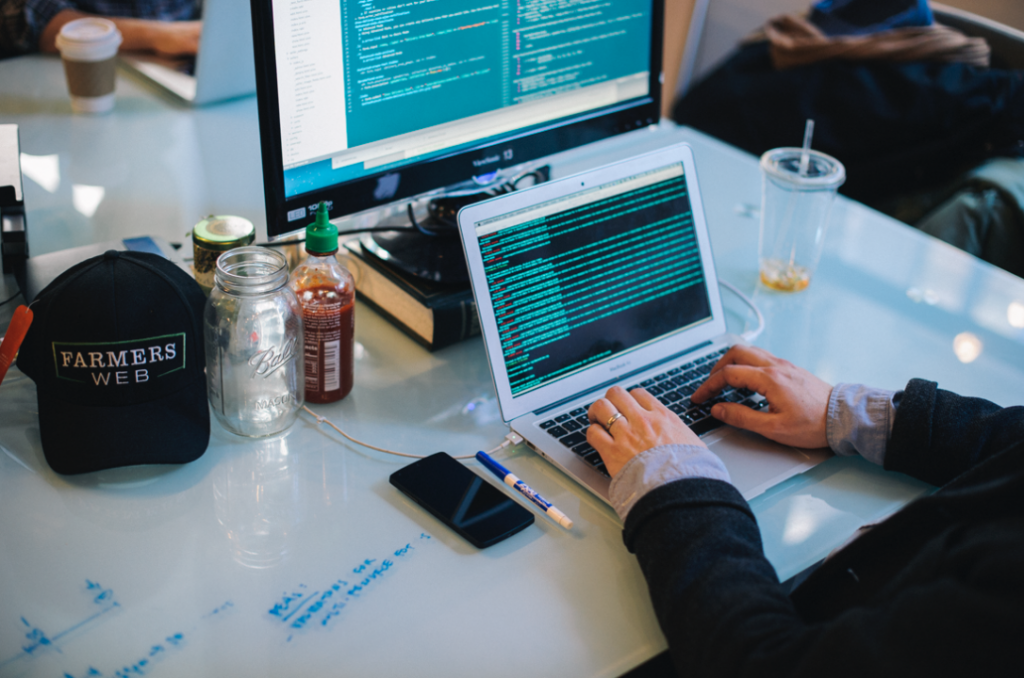
Editor’s note: Last month, we were honored that Food+Tech Connect CEO Danielle Gould joined us as the moderator for our food tech panel at Edible Institute. Her pioneering work in this space made her a natural fit and we are proud supporters of Food+Tech Connect’s upcoming Hack//Dining event aimed at creating a better future for the foodservice industry. We also applaud Google, Chipotle, Applegate and Studio Industries for helping make this event possible. Onward, benevolent hackers.
Recently, while helping a friend prepare for an ocean-side clam bake, I had the chance to test drive (park) some 2015 cars tricked out with the latest sensors to make us drive better. On the dashboard of one was a “mileage meter”: a digital readout of how miles per gallon were trending based on how I tickled the gas and brakes. Stretching from red at one end to green at the other, this digital bar was a constant, responsive reminder of whether I was driving to maximize fuel use. An efficient driver would consistently dwell in the green. And it made me strive to do just that.
What would it look like for diners, and those who feed diners, to dwell in the green? In her recent HackDining post, Joanne Wilson describes the tools — from Mouth to KitchenSurfing — that individuals are using. But what’s the equivalent for dining at scale — in hospital cafeterias, catering halls, rock concerts and music festivals, school lunch rooms and fast food chains? According to USDA data, the foodservice industry accounts for roughly half of the $1.24 trillion we spend on food. So focusing on these big volume establishments is arguably our best leverage point.
Some players in this space have made mission-focused decisions to tweak what they source and serve. Industry leader Bon Appetit Management Company has blazed a path here, seeking out domestically raised farmed fish, giving its chefs constant food miles challenges and hiring a head of food waste reduction. Fast casual chains like Chipotle and Sweetgreen prioritize regional sourcing, and have even helped their farmers invest and expand. The Live Aid series announced last year it would favor locally-grown veggies and hormone-free meats in its heavily trafficked concessions.
But what about for the firms that have yet to make any moves in this direction? Evidence from the food and brand lab at Cornell University shows that consumers will rarely make a good decision when there are bad food choices in front of them. (Give them a wider straw and they will mindlessly drink more soda.) Let’s assume that foodservice providers suffer from the same psychology. Then we must give them the hospitech tools to rank their real-time decisions, to share the results with their colleagues and customers, and to get rewarded (or punished) for the outcome. Think back to that miles-per-gallon spectrum on the dashboard. Here are three areas to consider hacking.

1. Improve sourcing databases. Mouth can point us towards the best small-batch pickles, but what about the sandwich chain looking for great gherkins at scale? B2B engines like Sourcery and Buyer’s Best Friend offer a good start. FarmersWeb is the future, offering much more richness when it comes to buying direct from farmers. Consumers browsing a seafood counter have an assortment of seafood watch cards, from Monterey Bay Aquarium to Blue Ocean Institute, most now in app form. And the seafood-sourcing chef can turn to Fish Choice. But there is still plenty of room to build out these databases for products with a big ecological footprint like meat and seafood.

2. Improve sourcing dashboards. Even with good databases, we can do more to encourage good choices. Most large foodservice companies use custom ordering interfaces to source their products. These interfaces are really good at tracking costs and tieing quantities ordered to specific recipes. But they currently give the chef little guidance or data as it applies to origin, ecological impact or nutritional value. There is tremendous missed opportunity here to integrate the functionality of consumer-facing sites like HowGood and Fooducate. Look at the dashboard tools that publishers like HuffPo or Vox Media use to optimize SEO and sharability, guiding the editor with a real-time score. We use Yoast on our own sites, and don’t publish a piece until we’ve achieved a high Yoast score (denoted by a green color). Could foodservice sourcing dashboards be structured in a Yoast-like way so chef knows if they are hitting their sustainability goals?

3. Reward the chefs by rewarding the eaters. Once this data is available to the chef, why not take it one step further and share it with their customers, just as they share the names of farms they buy from or the calorie count of a bowl of soup? Customers will step up to the counter and see a spectrum of options from green to red. I suspect many will tend towards the green, which will further reinforce the shift on the chefs side, raising the collective bar in a virtuous cycle. Consumers might even be rewarded at checkout with with badges in a FourSquare-like way, with monthly incentives or credits. It will give them all the more reason to keep eating this way.
Photo credits: Alan Gastelum, Patrick Kolts, Clay Williams



